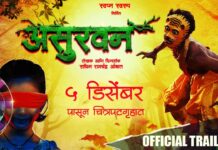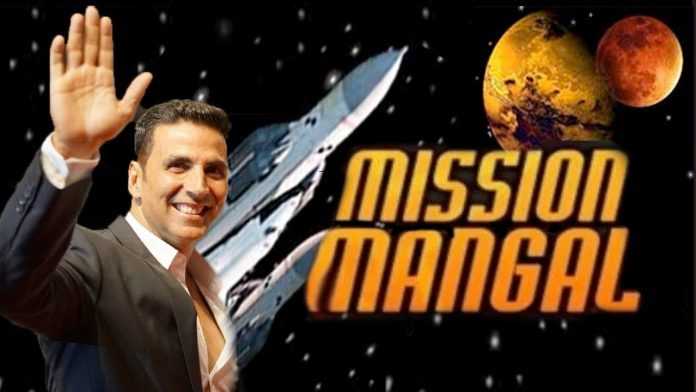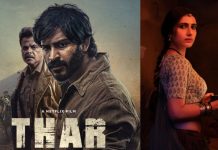By Surendra Bhatia
These are fortunate times for Bollywood. With the success of films like Uri – The Surgical Strike, The Tashkent Files, Parmanu – The Story Of Pokhran, Mission Mangal, political stories and high profile patriotism-inducing events, historic and current times, are proving to be fertile ground for movies. This opens up a huge lode of stories for Bollywood, something that it hadn’t mined in the past.
Certainly, film stories based on current times were almost unheard of… the idea that writers could spell out on screen an event or incident that had just unfolded in newspapers, and manage to make it pay at the box-office, was a thought that didn’t exist or register. Occasionally, some socially-conscious writers and filmmakers did venture into cinematically interpreting a movement but it was done within the strict parameters of commerce, with romance, songs, drama, emotions woven into the story to sugarcoat the so-called message. Raj Kapoor based his Jis Desh Mein Ganga Behti Hai on the call of social leaders to dacoits to give up arms, surrender and come into the national mainstream; Vijay Anand’s Kala Bazar dwelt on a reformist movement to provide petty criminals (black marketeers) gainful employment to wean them away from a life of crime; V. Shantaram took up the cause of an open prison for convicts in Do Ankhen Barah Haath; Bimal Roy made a sterling film on untouchability in Sujata… But though these were excellent films on social causes, they were commercially treated to such an extent that the social message was only a platform for entertainment. They were not specific to headline stories in newspapers, and they were not based on specific events, the way Uri – The Surgical Strike or Mission Mangal were… Oh, there must have been a few such films down the years, like R.K. Nayyar’s Yeh Rastey Hain Pyar Ke, Gulzar’s Achanak, and, more recently, Akshay Kumar’s Rustom, which was loosely based on the infamous Nanavati case, but these kind of films were few and far between.
Bereft of ideas, writers and filmmakers had been for many previous years focussed on regurgitating content that had proved to be successful during their time in Bollywood. The freshness in content was visible in very few movies. For instance, the original Dabangg came as a breath of fresh air; it’s not that the funny, corrupt but good-hearted cop was not seen in Bollywood before but the interpretation in the movie looked new, with Salman Khan living the role joyously. However, when Dabangg 2 released, it was obvious that it was simply a pale copy of the original, using the first screenplay as a template, and reworking the same scenes and sequences from it. Now, if a film like Dabangg 2, with one of the biggest stars of the industry, couldn’t come up with a fresh story for a sequel and was forced to cannibalise its own successful narrative, then what hope was there for the lesser mortals? Such was, generally, the state of writing in Bollywood (and still is, though to a lesser extent) that the effort to think up fresh content was way beyond the capabilities of most writers and filmmakers.
In this context, Bollywood’s discovery of stories based on headlines has become almost like a lifeline to a drowning person. Writers have started using their ingenuity in picking up real-life stories and adopting them to create novel movie scripts. The trick is simple. There’s a need to stay true to the known narrative, without taking off on unrelated tangents (romance, fights, stunts), and present it cleanly, creating the feeling that this is how it must have happened. They may take cinematic liberties to enhance drama but without the flakiness associated with Hindi film melodrama. Akshay Kumar’s Airlift is a good example of this strategy. The film was superbly paced, revelling in the tense situation of the characters, without resorting to melodrama. The end result was a heightened sense of credibility, and empathy for the characters and their plight. Airlift worked because audiences accepted it as recreation of an amazing story rather than ‘entertainment’, as it is generally understood in Bollywood. Dangal was a lovely film, with great acting and an amazing screenplay but its biggest draw was that it was recreating real life… that it was a true-life story, enhanced audiences’ empathy and acceptance. Dangal would be a hit at any time and space in Bollywood but it was, perhaps, a lot bigger because it was based on a true story and seemed more of a recreation of life rather than a movie script.
Hollywood has been doing it since decades –- in fact, recreating real stories on screen has been the best fodder for Hollywood along with making biopics -– but it is only in recent times that Bollywood has zeroed in on this game. No one cared to make a massive biopic on Mahatma Gandhi, that could have worldwide appeal; it took an Englishman to do cinematic justice to the Mahatma. But now, though Milkha Singh has been an iconic sportsperson in India since decades, Bollywood is finally brave enough to make space for his inspirational biopic. Filmmakers have finally started looking at Indian history and culture to draw inspiration for stories that are connected to the soil and have a sense of reality. Compare the biopic of Subhash Chandra Bose or even Mission Mangal to the escapist fare of Student Of The Year, and it would seem as if the films are from different planets. So, perhaps, now, some, if not many, Bollywood filmmakers have come down to earth. And it is proving to be a good move. Recently, so many films that would never have been made before, are reaching audiences and winning their confidence; it has almost begun to seem as if this is what audiences had been waiting for since years. So, more than audiences waking up to these new types of films, it is actually the filmmakers who have risen from deep sleep and realised, the world has changed and become a lot more real. This is not to say that commercial capers won’t work in the present times, but it is a fact that their formula for success can’t be taken for granted anymore.
Contemporary writers and filmmakers have absolutely no reason to complain about lack of stories. The present phase that our country is going through is overloaded with potential stories, the kind that spawned Uri – The Surgical Strike and Mission Mangal. Reportedly, the title Article 370 is already registered, so, that film should probably be in the pipeline soon; Swachh Bharat Yojana gave wings to Toilet Ek Prem Katha, so there is no reason why a film on the Ujwala scheme, under which gas cylinders are offered to women using firewood to make meals, shouldn’t be in the offing. Mission Mangal already has scope for a sequel. Sportspersons like P.V. Sindhu certainly deserve a biopic, and soon. There’s a star who would perfectly fit the role -– Deepika Padukone. India’s troubles with the UN resolution on Kashmir would make a far more interesting narrative than even The Tashkent Files. Recently deceased stalwarts like Atal Bihari Vajpayee and Arun Jaitley and Sushma Swaraj would make great subjects for biopics, especially Vajpayee whose appeal was pan-India. The way Arvind Kejriwal came to power is inspirational, logging one of the most massive electoral victories in Indian history, and lots and lots more. There is, literally, a film story hiding behind almost every major headline, and for conscientious Indian writers in search of content, there’s no question of any dearth of ideas.
Fortunately, audiences today are more steeped in reality than the previous generation which filmmakers thought could be seduced by heroines coming out of water in skimpy bikinis. Today, filmmakers have to offer novel content that audiences can relate to, or perish. For instance, Andhadhun: it wasn’t based on a real-life incident but it was shot so well that it seemed like it could well have been from real life. Because it was scripted so marvellously and enacted and directed so pithily, the director could end the film on an ambiguous note. Was the hero in the end blind or not? Was he ever blind? What was his game? And what was it that actually happened in the film and what did not? There may be some films like that but this is, perhaps, the first Hindi film that has left so many questions unanswered, and yet audiences, despite their confusion at the end, have accepted and lauded the film. That may not have been possible a decade back when filmmakers used to be conflicted whether to give the film a happy or tragic ending, and would shoot both and seek opinions. In fact, there have been cases when after release of the film with a tragic ending, directors have shot a happy ending and plugged it into a running film. So, leaving audiences confused at the end of a film was not even an option. Yet, Andhadhun got away with it so easily.
It is too early to say but in the transition that Bollywood and its audiences are going through, many new filmmakers will come to the fore, slightly more irreverent than the previous lot and a lot bolder in their choice of content. These are happy times for writers and filmmakers. If they do their jobs well, this may well lead to the rebooting of Bollywood –- finally.
































